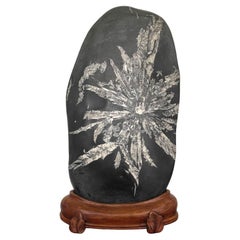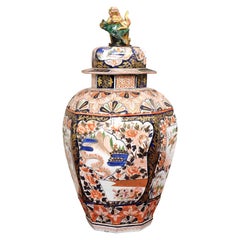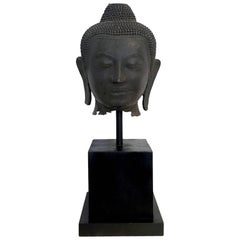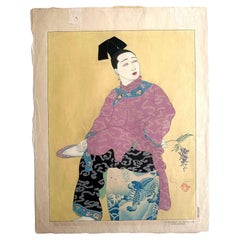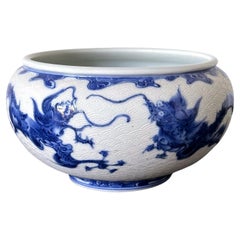Georgia - Asian Art and Furniture
Late 19th Century Chinese Chinese Export Antique Georgia - Asian Art and Furniture
Stone
Early 19th Century English Antique Georgia - Asian Art and Furniture
Ironstone
18th Century Japanese Edo Antique Georgia - Asian Art and Furniture
Brocade, Wood, Paper
19th Century Thai Other Antique Georgia - Asian Art and Furniture
Bronze
1930s Japanese Japonisme Vintage Georgia - Asian Art and Furniture
Paper
Late 19th Century Japanese Meiji Antique Georgia - Asian Art and Furniture
Ceramic
Early 20th Century Japanese Japonisme Georgia - Asian Art and Furniture
Brocade, Silk, Acrylic
2010s South Korean Modern Georgia - Asian Art and Furniture
Glass
1940s Japanese Japonisme Vintage Georgia - Asian Art and Furniture
Paper
19th Century Chinese Chinese Export Antique Georgia - Asian Art and Furniture
Silk
16th Century Chinese Antique Georgia - Asian Art and Furniture
Pottery
20th Century Japanese Meiji Georgia - Asian Art and Furniture
Brocade, Silk
Early 20th Century Chinese Qing Georgia - Asian Art and Furniture
Ceramic
Early 20th Century Japanese Meiji Georgia - Asian Art and Furniture
Ceramic
15th Century and Earlier Chinese Han Antique Georgia - Asian Art and Furniture
Terracotta
19th Century Chinese Qing Antique Georgia - Asian Art and Furniture
Stone
1880s Korean Other Antique Georgia - Asian Art and Furniture
Silk, Acrylic, Wood
Late 20th Century American Modern Georgia - Asian Art and Furniture
Ceramic
Late 19th Century Korean Other Antique Georgia - Asian Art and Furniture
Porcelain
19th Century Chinese Chinese Export Antique Georgia - Asian Art and Furniture
Hardwood
19th Century Japanese Meiji Antique Georgia - Asian Art and Furniture
Silk, Wood
18th Century Japanese Edo Antique Georgia - Asian Art and Furniture
Ceramic
19th Century Chinese Chinese Export Antique Georgia - Asian Art and Furniture
Silk, Wood
19th Century Chinese Qing Antique Georgia - Asian Art and Furniture
Wood
Mid-20th Century Japanese Modern Georgia - Asian Art and Furniture
Ceramic
Early 20th Century Japanese Taisho Georgia - Asian Art and Furniture
Hemp
Early 1900s Korean Other Antique Georgia - Asian Art and Furniture
Wood
Mid-20th Century Japanese Showa Georgia - Asian Art and Furniture
Paper
Early 20th Century Japanese Showa Georgia - Asian Art and Furniture
Silk
Early 20th Century Korean Other Georgia - Asian Art and Furniture
Wood
19th Century Japanese Japonisme Antique Georgia - Asian Art and Furniture
Wood, Lacquer
19th Century Japanese Meiji Antique Georgia - Asian Art and Furniture
Ceramic
Late 19th Century Korean Other Antique Georgia - Asian Art and Furniture
Brass
19th Century Korean Other Antique Georgia - Asian Art and Furniture
Porcelain
Late 19th Century Chinese Antique Georgia - Asian Art and Furniture
Paper
19th Century Chinese Chinese Export Antique Georgia - Asian Art and Furniture
Silk, Wood
19th Century Japanese Japonisme Antique Georgia - Asian Art and Furniture
Metal
Mid-20th Century Chinese Georgia - Asian Art and Furniture
Jade
Early 20th Century Japanese Meiji Georgia - Asian Art and Furniture
Ceramic
Late 19th Century Japanese Japonisme Antique Georgia - Asian Art and Furniture
Silk, Wood
19th Century Chinese Qing Antique Georgia - Asian Art and Furniture
Silk, Giltwood
1950s Japanese Japonisme Vintage Georgia - Asian Art and Furniture
Paper
Mid-20th Century American Modern Georgia - Asian Art and Furniture
Ceramic
19th Century Chinese Chinese Export Antique Georgia - Asian Art and Furniture
Stone
15th Century and Earlier Indian Other Antique Georgia - Asian Art and Furniture
Terracotta, Wood
20th Century Japanese Organic Modern Georgia - Asian Art and Furniture
Bamboo, Rattan
Early 20th Century Japanese Japonisme Georgia - Asian Art and Furniture
Ceramic
1960s Chinese Chinese Export Vintage Georgia - Asian Art and Furniture
Ceramic
19th Century Japanese Japonisme Antique Georgia - Asian Art and Furniture
Lacquer
19th Century Japanese Japonisme Antique Georgia - Asian Art and Furniture
Wood, Lacquer
Late 19th Century Japanese Meiji Antique Georgia - Asian Art and Furniture
Brocade, Silk
19th Century Korean Archaistic Antique Georgia - Asian Art and Furniture
Ceramic
Late 19th Century Asian Antique Georgia - Asian Art and Furniture
Porcelain
Late 19th Century Japanese Meiji Antique Georgia - Asian Art and Furniture
Silk, Wood
1890s Japanese Japonisme Antique Georgia - Asian Art and Furniture
Giltwood, Silk
1960s American Chinoiserie Vintage Georgia - Asian Art and Furniture
Metal, Brass
1750s Chinese Antique Georgia - Asian Art and Furniture
Porcelain
19th Century Chinese Chinese Export Antique Georgia - Asian Art and Furniture
Silk
Early 2000s Japanese Organic Modern Georgia - Asian Art and Furniture
Bamboo
1850s Japanese Edo Antique Georgia - Asian Art and Furniture
Paper
Read More
Symbols of Happiness and Rebirth Adorn This Japanese Satsuma Bowl
Decorated with white cranes and the sought-after thousand-butterflies motif, the Meiji-period vessel offers both a celebration of traditional aesthetics and a clear reflection of the era’s appetite for exquisite export pieces.
Chicago’s Pagoda Red Has a Spirited Mix of Asian Antiques and Bold New Art
For 25 years, gallerist Betsy Nathan has leveraged her keen eye and key connections to bring a unique selection of rare finds to the market.
In L.A., Gallerist JF Chen Has Long Championed Eclectic Blue-Chip Design
Now working alongside his daughter Bianca, dealer Joel Chen has presented a most covetable array of antiques, art and contemporary creations for more than 40 years.
12 Calming Spaces Inspired by Japanese Design
From cherry-blossom-adorned walls paired with glamorous lighting to wood-paneled ceilings above checkerboard-patterned chairs, these 12 spaces seamlessly blend Eastern and Western aesthetics.
Rodrigo Rivero Lake’s Mexico City Showroom Is a Museum-Worthy Trove of Spanish Colonial and Asian Antiques
The dealer and curator has spent the past 50 years amassing a collection of exceptional art, furniture and architectural elements that trace the cultural influence of the Spanish empire from Europe to the Americas and beyond.
16 Refined Asian-Inspired Interiors
These spaces exemplify how Eastern elements elevate a home's decor.
